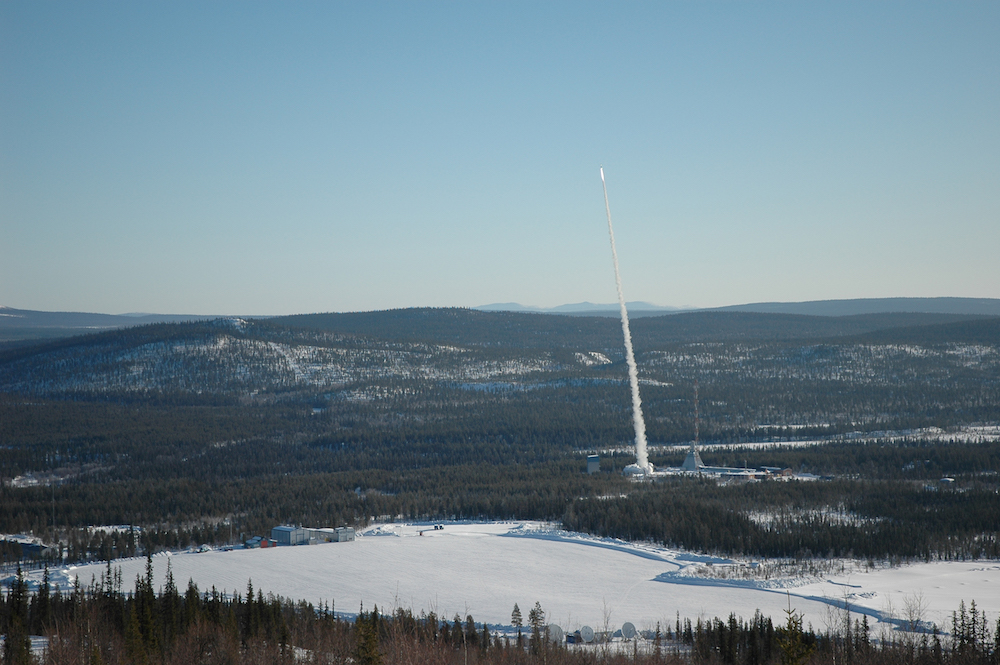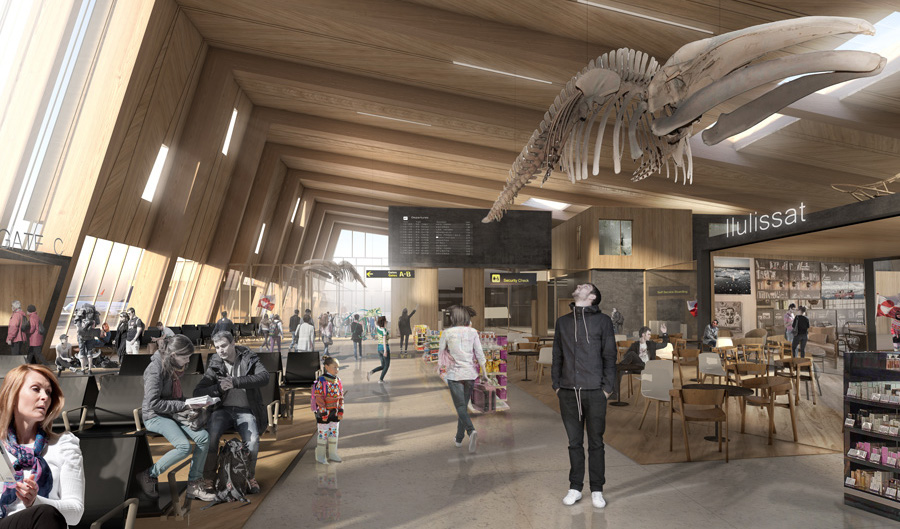The Week Ahead: Commercial launch
Space operations are becoming a for-profit activity. This week, scientists gather in the Arctic for inspiration about how to get the industry to take off.

One of the original benefits of putting things into space was that it gave scientists a better vantage point from which to look back on Earth, or out into other parts of the universe.
This is still the case: Scientists who study various aspects of the Earth consider satellites their best bet for gathering inexpensive and reliable up-to-the-minute information about things like the environment and weather, and in larger quantities than human observers can hope to record. In the Arctic, this has led to a better understanding about how the region is changing, but having a constant eye in the sky also means regularly updated detailed information about the paths of icebergs or the extent of sea ice. They have also been used to identify possible oil spills and may even help make better maps of under-surveyed areas.
For most of the space age, these operations have been an expensive proposition. Even with all the cost and labour they saved, only national governments and the biggest of companies could afford to get something aloft. Maintaining the hardware back down on Earth to receive and process the information has also traditionally been a task for the well-funded.
Today, though, the group of outfits offering to put things into orbit now includes several private and semi-private firms, in addition to a growing number of national space agencies. Along with other technological developments, this means that the price of making and launching satellites has become so cheap that there is an option to fit most budgets. Space has become the province of the start-up.
[How giving satellite data to Indigenous communities could boost safety and food security]
This will all be food for thought as space scientists gather in Rovaniemi, Finland, starting on November 13 for Scale the Space, a conference. Rather than academic discussions about the science of space, they will be asked to consider how their work fits in the ‘new space’ movement, which seeks to develop faster, better, and cheaper access to space, in part by co-opting many of the attitudes that led to the emergence of Silicon Valley, and especially its latter-day successes.
Placing such a meeting in the Arctic is itself an entrepreneurial stroke, aimed in part at attracting new businesses and residents, but the choice is not utterly random for the scientists attending. The region has a number of geographic advantages with which they will be familiar, particularly when it comes to receiving information from satellites flying in polar orbit or studying the magnetic field. Indeed, Finland’s Sodankylä Geophysical Observatory, located two hours north of Rovaniemi, was set up in 1914 for just this purpose.
Norway and Sweden also have prosperous facilities in their Arctic regions specialising in one aspect or another of the space industry. Likewise, private firms and space agencies have been launching rockets from Alaska’s Pacific Spaceport Complex, on Kodiak Island, since 1998.
Those working to build a Northern space industry point to factor like these as reasons to be hopeful, though they recognize much work needs to be done. It is, after all, rocket science.
The start of something old

If it seems like Greenland has been discussing what to do with its airports for quite some time now, you would be right: The idea of making it possible for passenger jets to fly directly to Nuuk, the capital, and Ilulissat, the main tourism destination, was first proposed in the early 2000s.
In its current format, the set of laws that would establish the legal framework for extending the runways in Nuuk and Ilulissat, while also building a new airport in Qaqortoq, the regional administrative center in southern Greenland, currently only served by a heliport, has been working its way through the political process since 2015.
In 2016, Inatsisartut, the national assembly, voted in principle to allow the construction, which would be the country’s largest infrastructure investment ever. On Thursday, it will decide, once and for all, whether the project will go ahead when it considers a bill to approve funding for it.
The aim of moving the main international gateway from Kangerlussuaq, established by the U.S. military during World War II, is to make it easier and faster and hopefully cheaper to travel to Greenland by allowing people to fly directly to the two destinations most of them wind up at anyway. In Nuuk’s case, a longer runway, and the bigger airplanes that would use it, might mean fewer cancellations due to wind and fog.
[Greenland’s airports: Unexpected turbulence]
Even though support for the idea of improved infrastructure runs deep, decisions of this magnitude are not made lightly; study after study has been published seeking to determine whether any of the purported gains will be realized, or whether alternatives would be better investments. So far, the results have been inconclusive.
With nothing to trip it up, the bill appears likely to pass despite many, including a majority in Inatsisartut, expressing at least some concern about the details of the project.
Should construction of the new facilities begin, lawmakers’ work will not be done: A decision still needs to be made about the fate of the airports that will be made redundant by the new construction.
Closing them will directly impact the communities whose existence depends on them, and those who live there are asking to be resettled, or to be compensated for any loss in the value of their property. Closing Kangerlussuaq will require airlines, airport authorities and aviation officials to rethink details like regularity and safety procedures. Some are concerned that, in the end, the effect will be to make it more, not less expensive, to fly to Greenland, especially for those travelling someplace other than Nuuk or Ilulissat.
[As tourism to Greenland grows, the country looks to grow tourism infrastructure to match]
Still, whatever arguments there are in favor of keeping all of the airports open, observers have assumed from the start that some facilities would have to go: Even if passenger numbers grow as hoped, there won’t be enough to go around.
Lawmakers could put off a decision about what to do about Kangerlussuaq — but indefinitely: the permafrost under its runway is thawing and it must be either rebuilt or abandoned soon. Neither time nor travel patterns are on its side.
The Week Ahead is a preview of some of the events related to the region that will be in the news in the coming week. If you have a topic you think ought to be profiled in a coming week, please email ne**@ar*********.com.